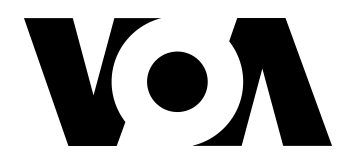AMSTERDAM (Reuters) -The Netherlands heads to the polls for the third time in less than five years on October 29. Here is an overview of how the general election works and what to expect in coming months.
WHY IS A NEW ELECTION NEEDED?
The election was forced by far-right leader Geert Wilders in June, when he unexpectedly toppled the fragile right-wing coalition dominated by his Freedom Party (PVV) - blaming coalition partners for not supporting his plan to halt all asylum migration.
Wilders won the previous election in November 2023 by a surprisingly wide margin, but had to give up his ambition to be prime minister in order to form a governing coalition. That government, led by the politically independent career bureaucrat Dick Schoof, failed to implement major policy aims and was brought down by Wilders in under a year.
HOW WILL IT WORK?
Voting for the 150-seat Lower House of parliament will take place on Wednesday October 29. Most polls open at 7:30 a.m. (0530 GMT) and close at 9 p.m. (1900 GMT), when a first exit poll is released with an indication of the final result.
Votes are counted by hand, with preliminary results coming in overnight.
Parties will need to win roughly 70,000 votes to gain a seat in parliament.
In 2023, fifteen parties made it into the Lower House, and roughly the same number is expected to make the cut this year, with 27 on the ballot.
WHAT ARE THE EXPECTATIONS FOR THIS ELECTION?
Wilders' PVV has led the polls since the collapse of government and held that lead one week before the vote. At an estimated 34 seats, however, he is seen falling back slightly from the 37 seats won in 2023.
Seat forecasts for the other leading parties are the left-wing GroenLinks/PvdA at 25, the center-right Christian Democrats (CDA) at 23 and the center-left D66 at 16 seats.
The right-wing VVD has lost the dominant position it had under the leadership of Mark Rutte, the current chief of NATO and longest-serving prime minister in Dutch history. After being part of the chaotic PVV-coalition, the VVD is now polling around 15 seats, down from an already relatively low 24 in 2023.
But recent elections have shown that much can happen in the last days before the vote and a week ahead of the election, 47% of the voters were still seen to be undecided.
WHAT WILL HAPPEN NEXT?
As no party ever gets a majority of the votes, the Netherlands is always led by government coalitions, which take months to form.
A difficult formation looms again, as several of the leading parties have already excluded working with each other and the electorate is highly splintered.
This has made Wilders' chances of finally becoming prime minister especially small, as the CDA, VVD and the leftwing GL/PvdA have all ruled him out.
Polls indicate that without the CDA, Wilders has no viable path to a majority, leaving either the party that finishes second behind him, or the one that manages to defeat him, in the drivers' seat.
But even then, prospects for a quick formation aren't immediately brightened, as the VVD has also said it will not join a coalition with GL/PvdA.
IS THERE A DEADLINE?
There is no limit on how long a formation can take, and parties could decide to change prospective partners along the way.
The last three government formations took more than 7 months. Rutte's last coalition set the all-time record with 299 days between March 2021 and January 2022.
That government collapsed after just two years, paving the way for the election won by Wilders.
(Reporting by Bart Meijer; Editing by Toby Chopra)







